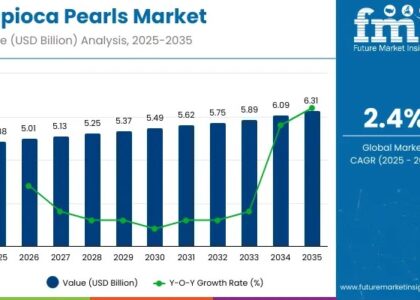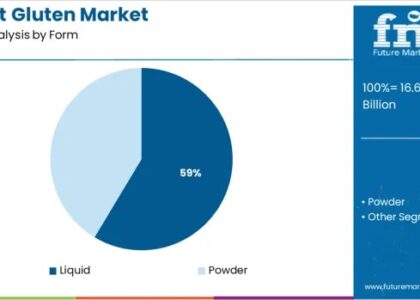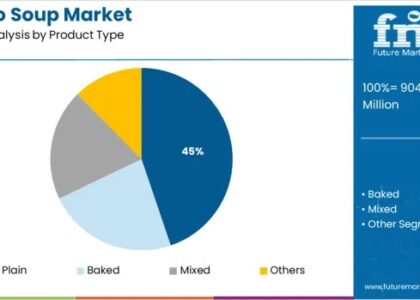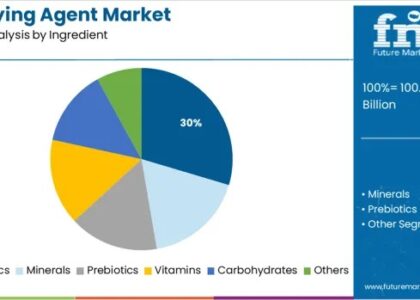
Once dismissed as too bitter, too hard, or simply too niche, cocoa nibs are now stepping into the global spotlight. These crunchy, roasted fragments of pure cacao bean—once a curiosity at health food stores—are becoming a serious player in the evolving global food market.
According to Future Market Insights, the cocoa nibs market is projected to grow from USD 1.13 billion in 2025 to USD 1.64 billion by 2035, reflecting a compound annual growth rate (CAGR) of 3.8% over the forecast period (Future Market Insights).
But this rise in demand isn’t just about taste trends or wellness fads—it points to deeper shifts in how we consume, and how global food systems are breaking under pressure.
Explore Emerging Market Insights: Request a Sample Report Now: https://www.futuremarketinsights.com/reports/sample/rep-gb-22304
From Wellness Trend to Market Force
Cocoa nibs have become the poster child for “clean” chocolate. They skip the processing, dodge the dairy, and cut the sugar. For some, they’re a protein-packed, antioxidant-rich alternative to traditional chocolate. For others, they’re a culinary ingredient with a satisfying crunch and a hint of luxury.
But let’s not pretend this is just a health movement. Nibs are rising because consumers are increasingly wary of ultra-processed foods. People want ingredients with short labels, visible origins, and minimal manipulation. Cocoa nibs—raw, rustic, and simple—tick all three boxes.
Still, what’s good for the body doesn’t automatically translate to what’s good for the planet—or the people growing the cacao.
High Demand for Market Insights: Discover Comprehensive Trends in Our Full Report: https://www.futuremarketinsights.com/reports/cocoa-nibs-market
The Real Story Behind the Boom
Behind this billion-dollar ascent is a global cocoa supply chain riddled with problems: climate vulnerability, soil depletion, and, most alarmingly, decades of systemic underpayment to cocoa farmers.
Cocoa nibs, because they can be marketed as a premium, artisanal product, offer the illusion of a cleaner, fairer chocolate industry. But unless that premium trickles back to growers—especially those in West Africa, who supply most of the world’s cocoa—the nibs boom will be just another polished veneer on a broken system.
More Than a Snack—A Litmus Test
The forecasted growth to $1.64 billion by 2035 is a milestone—but it’s also a test. Can the food industry scale a high-integrity product without losing its soul? Can nibs become mainstream while staying ethically sourced? Or will they go the way of so many “better-for-you” trends—co-opted, diluted, and disconnected from their origins?
The answer depends on what happens next:
- Will companies commit to traceable, fair-trade supply chains?
- Will consumers ask harder questions about where their “superfoods” come from?
- And will nibs remain a niche garnish, or become a building block of a better chocolate economy?
Final Take
The rise of cocoa nibs is a rare chance to do things differently. They represent a clean break from industrial chocolate—a product that tastes like what it is, and reminds us where it came from. But growth without accountability is just marketing.
If the industry doesn’t back this momentum with real action—on sourcing, on equity, on transparency—then cocoa nibs won’t fix chocolate. They’ll just mask its bitter truths.
Company Profiles
-
- Pharmavite (Nature Made)
- Church & Dwight (Rainbow Light / Palmer’s)
- Johnson & Johnson (Belli)
- Unilever (Palmers)
- Earth Mama Organics
- Ritual
- Needed
- Burt’s Bees Mama Bee
- CeraVe (L’Oréal)
- Vitacost
- Others
 Explore Functional Food Ingredients Industry Analysis:https://www.futuremarketinsights.com/industry-analysis/functional-food-ingredients
Explore Functional Food Ingredients Industry Analysis:https://www.futuremarketinsights.com/industry-analysis/functional-food-ingredients
Key Segment
By Product Form:
- Prenatal Pills/Tablets
- Prenatal Gummies
- Prenatal Powders/Sachets
- Maternity Creams/Gels
- Maternity Oils/Serums
- Maternity Lotions/Balms
By Distribution Channel:
- Pharmacy & Retail Chains
- Direct-to-Consumer (Subscription)
- Online Marketplaces
- Hospital & Clinic Dispensing
By End User:
- Individual Consumers (Self-Purchase)
- Hospitals & Healthcare Facilities
- Pharmacies & Drugstores
- E-commerce / Specialty Boutiques
By Region:
- North America
- Latin America
- Western Europe
- Eastern Europe
- Asia-Pacific
- Middle East & Africa





